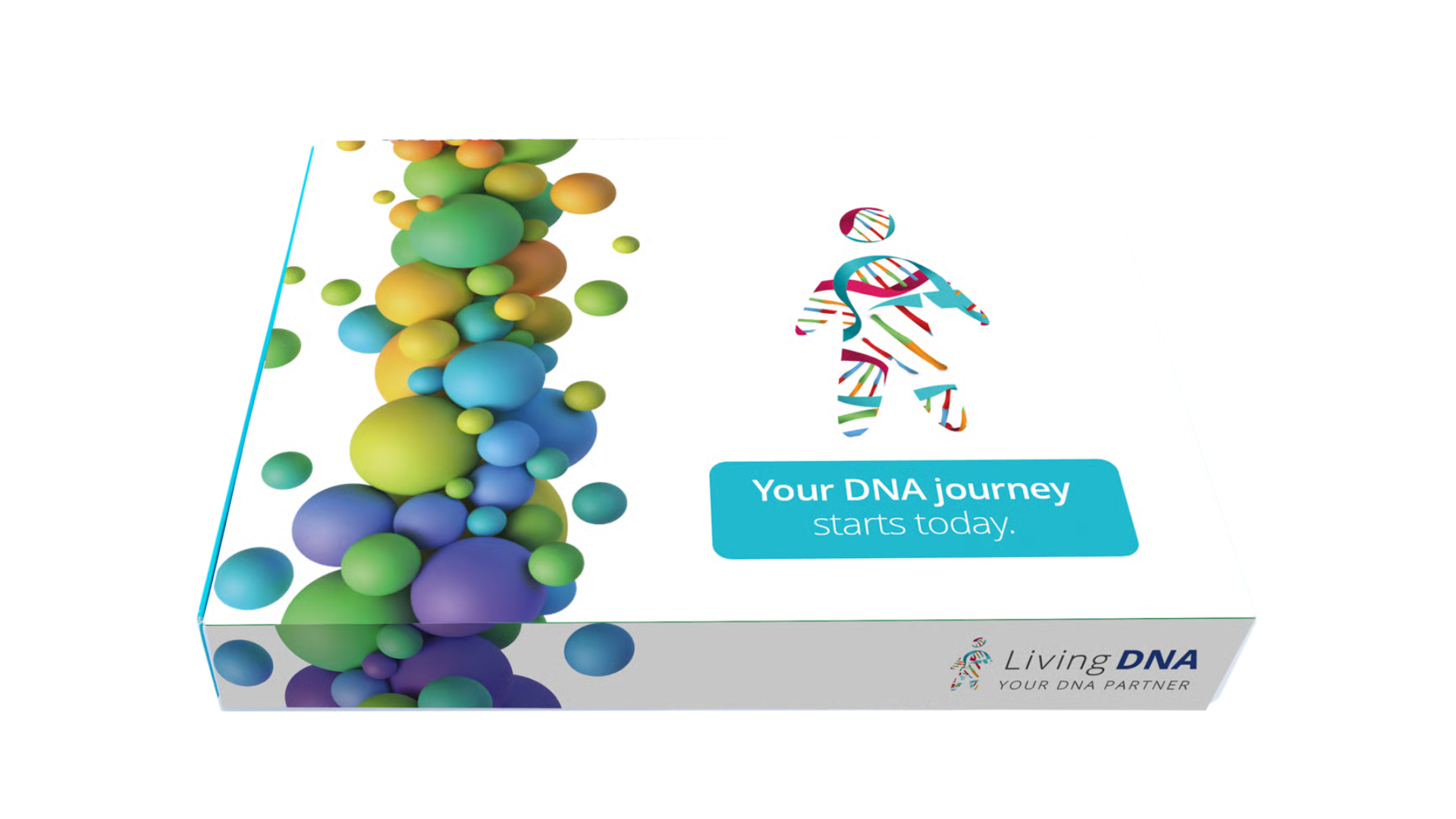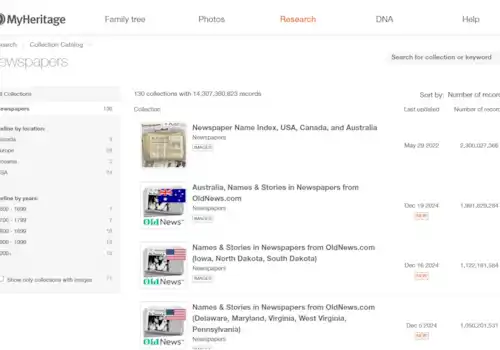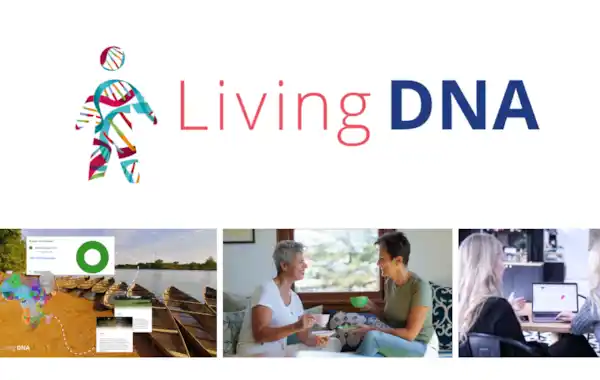26 March 2025
|
Living DNA offers a unique combination of approaches to genealogy, providing insights into your Neanderthal ancestors, wellbeing reports, a focus on British and African ancestry, and details as to how you fit on the haplotree. We spoke to Living DNA’s Emma Smith to find out more.
In this article
- Living DNA’s vision
- Discover your haplogroup
- Gain insights to your ancestral regions
- Explore your archaic DNA inheritance
- Find & work with your DNA matches
- Upload your DNA to Living DNA free!
- Upload your Living DNA data to Gedmatch
- Your health
- Looking forward
Whilst many of us will naturally opt for the larger genealogy organisations when choosing a DNA test, there are alternatives that can lead to new discoveries and a different assessment of your ancestry.
Living DNA’s vision
Unlike many DNA testing companies that focus solely on ethnicity estimates and family matching, Living DNA was founded with a broader vision: to highlight human diversity while also emphasising our shared genetic connections.
‘Living DNA was founded on the aspiration to combat racism,’ Living DNA’s Emma Smith tells us. ‘We want to show as many people as possible how individual and diverse the human population is but also to demonstrate our similarities. To show that identity goes further than the colour of your skin or the location you grew up in.’

From the outset, Living DNA has been involved in projects such as ‘Show Racism the Red Card’ and ‘One Family, One World’, using genetic research to break down barriers between people and cultures.
This world outlook also extends to the health data DNA tests can collect and share. ‘Our health systems are nearing bankruptcy yet 80% of illness and disease is preventable and lifestyle-related,’ says Emma. ‘What if we could change that? What if through the power of DNA and the way it’s delivered we are able to re-connect with ourselves and each other? What if as a result, we start to live a more enriched and healthy life? We see that as more than possible.’
Discover your haplogroup
Both motherline and fatherline haplogroup and haplotype results are included in the Living DNA Full Ancestry testing costs, helping users determine where they fit on the haplotree.
The Migration Maps trace your mitochondrial DNA inheritance (received from your direct maternal line – i.e. your mother’s mother’s mother and so forth) and your Y-DNA inheritance (received from your direct paternal line, if you are a male).
Your haplogroup and haplotype will help you gauge parts of your DNA inheritance over many thousands of years.
Note that a matching database is not provided, so you will not be able to see which other DNA testers on Living DNA share the same haplotypes as you. ‘Living DNA currently does not offer MT and Y matching but we do offer space in the family matching section for users to add their Haplogroup for matches to view’ Emma says. (FamilyTreeDNA is the only genetic genealogy company that offers a haplotype matching database for family historians).
Gain insights to your ancestral regions
The Living DNA test offers a focus on British and African ancestry and includes detailed reports, maternal and paternal haplogroups (usually female testers can only be assigned a maternal haplogroup), and can provide up to 150 regions across the globe, including sub-regional breakdown.
Results can also be presented in a personalised book, intended as a keepsake or a gift for relatives.

Explore your archaic DNA inheritance
Going back much further in time, Living DNA also offer a ‘Neanderthal’ test, which shows you how your characteristics derive from Archaic Human DNA. ‘Alongside all the benefits from Full Ancestry, we can provide you with Neanderthal & Denisovan scores.
Your score represents the number of alleles (DNA letters) that you share with Neanderthals and Denisovans. Compare your level of Neanderthal DNA with the rest of our userbase, as a whole and by region,’ explains Emma.
The Neanderthal and Denisovan report is able to be purchased as an add-on to the Full Ancestry test, as are the Classical (Greek, Roman) and Viking reports.
Find & work with your DNA matches
Living DNA services include a Family Matching tool which helps users discover genetic relatives by comparing your autosomal DNA against potential matches, and a Chromosome Browser, available to users who opt for full autosomal analysis, which displays the genomic location of the DNA segments, as centiMorgans, that are shared between you and one of your matches.
Upload your DNA to Living DNA free!
Whilst you may have opted to test with a different testing company, your ‘raw’ DNA data isn’t limited to that database, and can be uploaded to other websites, including Living DNA.
What advantages do you stand to gain by importing your DNA to Living DNA?
‘Because each company uses unique methodologies and reference panels, results can vary,’ a Living DNA spokesperson recently explained.
‘A region that appears in one company’s report may be entirely absent or look different in another. By uploading your DNA to other platforms, you can access unique analytical techniques, uncover hidden ancestral connections, or even refine your regional breakdown with greater accuracy.’
Living DNA accepts DNA test uploads from the following companies: AncestryDNA, 23AndMe, MyHeritage, FamilyTreeDNA (family finder), Gene by Gene, and Genographic (Geno 2.0). Unlock more of your DNA story by exploring the variety of updates available in the Living DNA store.
Upload your Living DNA data to Gedmatch
Living DNA data can also go the other way, and users can upload their results to the Gedmatch website (www.gedmatch.com), which allows you to analyse results and compare DNA shared with other users. (Note the law enforcement opt-out option if deciding to use Gedmatch, if you do not wish your DNA, once uploaded to Gedmatch, to be used to that end).
Your health
Living DNA’s Wellbeing experience is available via an online portal, either as an upgrade or a standalone kit, and provides personalised insights into how genetics can influence various aspects of health and lifestyle.
‘The focus on food intolerances, vitamin absorption, and muscle response seems especially practical for tailoring diet and exercise plans,’ Emma says. As ever, such information should not replace professional medical advice, however.
Looking forward
‘Living DNA has big plans for the next year or so,’ Emma says.
The next update promises to provide more detail to regions worldwide, specifically those with European and Asian ancestry. ‘We are also continuing with building our panels and would love to improve other regions such as Ireland and France,’ Emma adds.
‘As part of building this, taking part in our research is vital. If anyone would like to get involved they can upload to us and opt into research.’
Future plans also include the ability to upload full NGS [Next-Generation Sequencing] data, more for family matching, and adding X chromosome reporting to the matching method. ‘Furthermore we will be adding a clustering tool, and we will be making updates and improvements to our Viking product as well as releasing a new ancestry upgrade option.’
Find out more about LivingDNA at: livingdna.com/uk/









